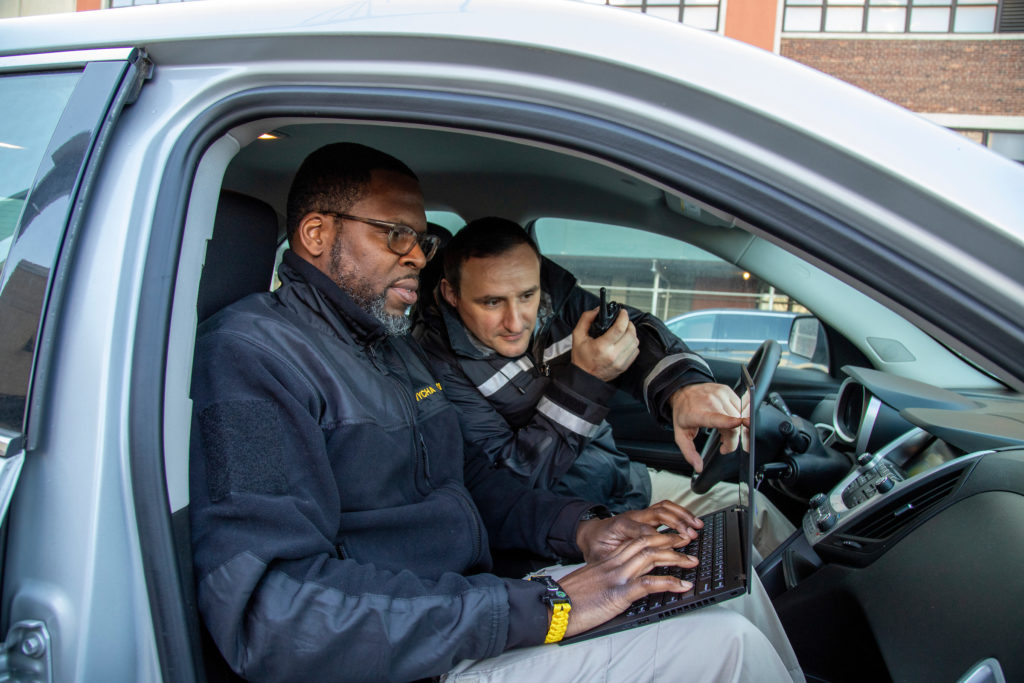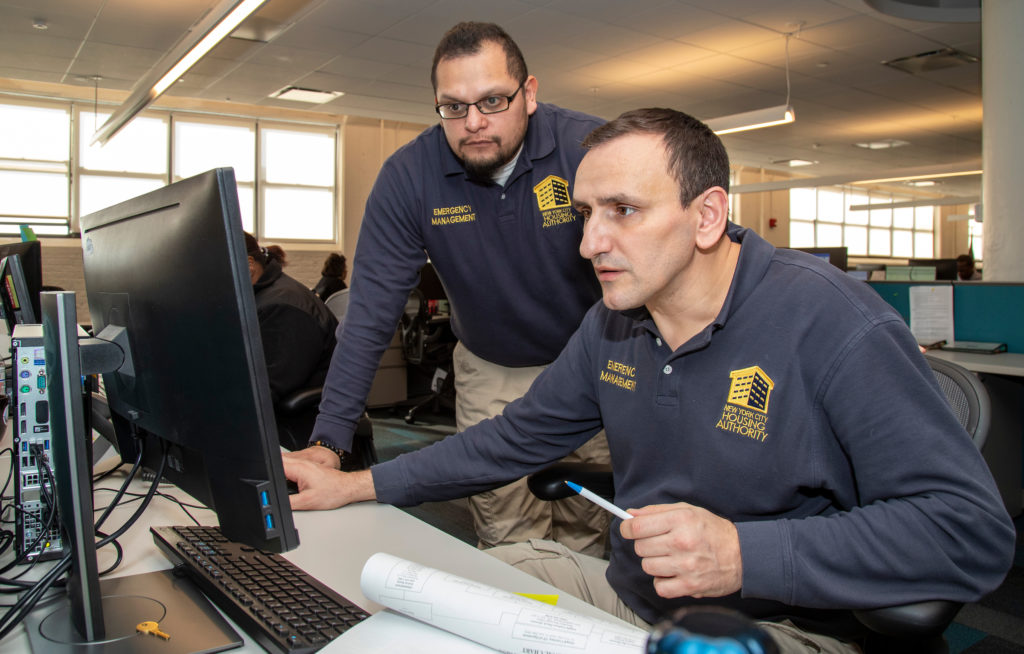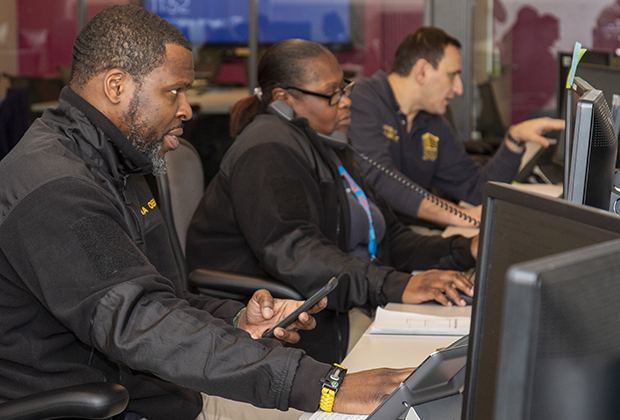Clear Channels, Safe Residents
To improve the way it manages wide-scale incidents, NYCHA’s Office of Emergency Management (OEM) launched a six-month pilot program based on NYC’s Incident Command System, which employs on-call field coordinators to coordinate efforts and communications between responding agencies. “It has been an effective emergency response model for the city,” said Rudy Murillo, Director of NYCHA’s OEM. “Ours will of course focus on the specific needs of our residents and properties.”
NYCHA OEM created 12 field coordinator positions who, according to an established protocol, respond to events that impact an entire development or that involve a multiagency response, such as a power failure impacting a NYCHA development.
Field coordinators assist the incident manager, who could be, depending on the time or scale of the event, the property manager, an ESD administrator, or a police officer, firefighter, or NYC Emergency Management official. They may be asked to assist on scene in multiple ways, such as with traffic control; helping property management knock on doors, hand out flyers, or make phone calls; and tracking resource requests. Their most important function, however, is to maintain clear communications between responders, NYCHA staff, and residents.
Soon after arriving at the scene of the incident, the field coordinators gather information about who is there, which agency they represent, and their contact information. They serve as the point of contact at the command post, relaying information to NYCHA’s senior leadership as well as the Department of Communications and Office of Intergovernmental Relations (which may be communicating with the press and elected officials about the incident). For city-wide incidents, the field coordinator also serves as the Authority’s advocate, so residents’ needs are represented when prioritizing access to resources and restoration of service.
That last point is especially important for Antonio Richardson Jr., one of the new coordinators and a US Army veteran: “It matters that we are there to speak for residents. It’s another form of customer care.”
“But the first thing we do when we get there is process info and report back what we see,” he continued. Mr. Richardson’s Army experience taught him the importance of straight talk, of using simple language and avoiding jargon. “That helps greatly when engaging with residents at an incident. Some residents are in distress when we arrive, which is completely understandable. A calm disposition gives them the confidence that we have things in control, and that lessens their anxiety. We help resolve issues when we can, but if something is beyond our ability to help at that moment, we hear them out and direct them to the appropriate channels.”

Another field coordinator learned teamwork on the professional basketball court. “We are only as strong as the 12th member of a team,” said Ken Harley Jr., referring to his captainship of the Den Haag Hollanders, which played in the Euro League, the European version of the American NBA. After playing across Europe for four years, he returned to the US and entered public service as a special enforcement officer for the NYC Department of Homeless Services at a facility for men diagnosed with severe mental illness, schizophrenia, paranoia, depression, and addiction. He noted that effective equipment is also vital: “We go in with powerful 45-watt portable radios preprogrammed to specific emergency channels used by other agencies. We also carry laptops and cellphones.”
“We call it redundancy,” chimed in OEM Director Murillo. “If for whatever reason a method of communication fails – say battery or equipment failure – there are other tools that team members can use. If the radio fails, team members can use cellphones and landlines. Cellphones are loaded with the Microsoft Team app. It allows us to make calls, text, organize voice and video conferences, and share documents and images with the entire team at the same time.”
Mr. Richardson agreed: “Having top communications gear improves responses. At the end of the day, though, we can make a big difference through customer service – how we respond, what we say, and how we listen.”








